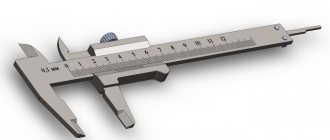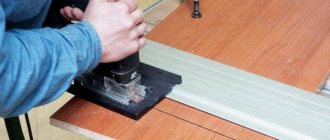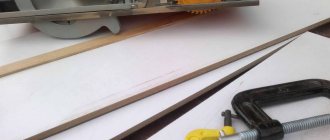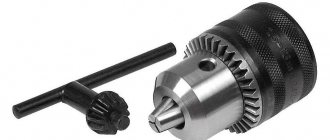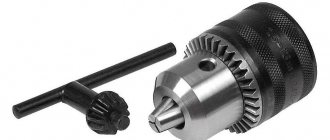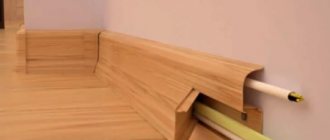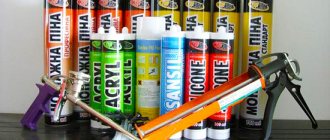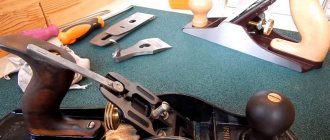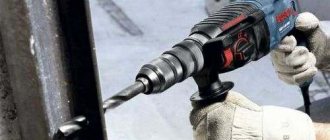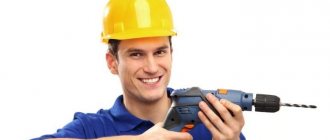Author: Maxim Korovin Comments: Reading time: 7 minutes
Situations arise in life when the head of an organization, the owner of a site, a tenant, or simply a resident of an apartment building needs to understand how to properly cut down a tree. There can be many situations of need. It is important to remove the tree according to the law and regulations so that people and the area where it is located are not harmed.
Are you from Kursk region?
Professional arborists from the company SpilKursk.PRO will help you cut down a tree safely!
More details
Sawing with hand tools
- Working with a chainsaw
- Cutting the trunk and branches
- Stump removal
Professional tree removal methods
- Free felling of wood
- Using the natural slope of the trunk
- Directional cutting with pullback
- Free discharge windrow
- Sawed in parts with a curtain
- Removal with full curtain
- Cutting down when the tree is completely covered
- Use of vehicles
Working with a chainsaw
Almost any equipment owner is sure that he knows how to cut down a tree with a chainsaw. In fact, this work is dangerous and requires precise actions.
Preparation
Tool : before operation, the chainsaw must be fully prepared - a sufficient level of gasoline, oil, check the integrity and tension of the chain (when the chain is pulled from the top of the bar - it is necessary that the guide teeth do not come out of the groove), switching on and off without jamming.
Tree : determine the fall zone of the cut tree, clear the space in that direction, cut down all the branches to shoulder height. The object's impact zone is planned to be 2 times larger than its crown.
If you are going to fell a tree for the first time and cannot determine the fall zone by eye, you can hold a carpenter’s ax or any object 60-70 centimeters long (the standard length of the ax handle of a carpenter’s ax) at arm’s length and move towards the tree until the ax and the tree become “ same height." In the place where you stopped there will be a point where the top of the tree touches the ground.
Three stages of felling:
- An oblique cut of wood from the side of the fall from top to bottom at an angle of 60o to the base. It is sawed to a depth of up to a quarter of the diameter of the trunk.
- The undercut is horizontal or at an angle of 30o - made from below on the same side, until it connects with the top, until a wedge is obtained. The cutting angle should be 45o. Complete cutting of a tree is prohibited!
- Felling cut. Clearly on the opposite side of the future fall trajectory. It is performed parallel to the second undercut, but with a distance of 5-10 cm above it and leaving 10% of the diameter uncut. The undercut between the main cut and the undercut is a guide chip. It is left at the corner of the tree. If left incorrectly, part of the barrel will bounce back strongly and can pierce a person's chest.
Cutting in 3 stages is the basic basis of any tree cutting.
Possible cutting options from the fall side: the first is a horizontal undercut, then the second is made to connect to the first from above at an angle of 45 degrees. It is important to work smoothly all the time, without jerking, but at maximum engine speed. When the final cut is near completion, a wooden wedge is inserted and driven into it to prevent jamming the chain guide. You can use a pole, pre-installed cables, or even a jack to guide the trunk.
At the final stages, it is especially important to monitor the direction of movement of the trunk in order to cut the tree with a chainsaw in the right direction, and, if necessary, correct it or run away. As soon as you hear the crack of the barrel, you need to urgently remove the saw, turn it off and move as far away as possible. It is important to calculate in advance so that the felled tree does not get stuck in the branches of neighboring trees or power lines. There should be enough space left on the ground to allow for cutting branches and cutting the trunk.
Features of cutting down inclined trees
A tree whose slope from the vertical is no more than 10o is considered upright and sawed according to the usual pattern. If felling needs to be done in the direction opposite to the slope, it is important to consider the following:
- After the main cut, it is important to align the wood in the desired direction, while coping with the resistance of the guide chips. You can level it with cables or make one edge of this chip wider.
- To block the backward movement, you can use a winch or pulley.
- If the slope of the trunk is more than 10o, it is better to choose another cutting method, without the need for leveling.
For old, rotten trees, it is better to leave the guide chips thicker so that they do not burst at the most unexpected moment. If this happens, the trajectory of the tree's fall cannot be predicted. If there is a choice in space, it is better for the cut tree to fall on the side where it has more branches and twigs.
Safety and escape zones for the feller are located on the sides of the fall trajectory at approximately 45o. You can't stay in a place opposite to falling. If a person makes a mistake in the thickness of the chips, the trunk will sharply go back and cripple.
If you need to saw a small tree, there will be no special problems. But if the tree is of a decent age or rotten, big troubles can arise. A person may not accurately calculate the direction of the fall, make a mistake with the depth of the cut, or even jam the saw in the cut. At the most unexpected moment, wind may appear or change its direction. All this is fraught with, at best, a broken tool, a branch flying over the head or shavings in the eye, and at worst, a broken roof of a building tucked under the trunk, and even broken ribs or a neck.
How to cut down a tree with a chainsaw (video)
After the sawyer has cut the trunk, he pushes with his hand or a pole, with a stop at a height of 300-400 cm. To prevent cracking of the log, commercial wood is cleared of branches as quickly as possible, after which bucking and storage are carried out.
To fell a trunk manually, you need to follow certain rules:
- The longer the cutting blade of a hand saw, the more springy it is, which can significantly complicate the process of cutting hardwoods, including ash, maple and oak;
- The length of the hacksaw blade must be determined in accordance with the rule, which states that the length of the saw should be a couple of times greater than the diameter of the trunk;
- the teeth of a hacksaw that is too short will jam inside the wood, and uncomfortable work will cause rapid fatigue.
As a rule, the manual method is used to cut down young and not too tall trees.
Cutting the trunk and branches
The branches are cut down starting from the bottom of the lying tree. Each branch, first from below, then finished off from above. In large branches, a large part is cut off first, then the remainder is sawed off.
If you do not have enough experience, then it is better not to start disassembling large trees alone. It is very difficult to calculate forces, and you will get tired very quickly, which will increase the risk of mistakes.
Korovin Maxim Arborist. Head of the company SpilKursk.PRO
The cutting of the trunk begins with a cut to half the depth. Without removing the saw, the wedge is driven in with an ax. This is a guarantee that the equipment will not get caught between parts of the tree. Then comes finishing.
Stump removal
Only a person with serious experience can use a chainsaw to make cuts in a stump. There is a high probability of a strong kickback of the saw!
| Stump type | Work technology |
| Small | Use the shovel under the root in a circle like a lever. If you hear a tearing sound, good, the process has begun. |
| Medium size | Dig a hole 2-3 times wider than the trunk. Hard roots must be chopped or cut off with an ax on both sides. You can use a chainsaw, but first thoroughly clean the roots from the soil at the saw site. |
| Large | You can use a crowbar as a lever. If it is possible to install, use a lever hoist or a 3-4 t winch, if there is a strong support for its attachment. |
| Any | Use a wood chipper that uses disc blades to turn the stump into shavings. |
If you couldn’t overcome the stump, you don’t want to make a special effort to cut it down, and time is not in a hurry - you can use the “old-fashioned” method, which works great:
- Using a drill with a long drill, drill many vertical holes 15-20 cm deep in the stump.
- Pour one of the products into each: carbide, potassium or ammonium nitrate. The first remedy works best. For a stump diameter of 60-75 cm, 1 kg of carbide is enough.
- Pour the product with water, strictly without splashing.
- Seal the holes securely to prevent precipitation from getting in. You can use chops, but it’s easier to wrap the stump with construction polyethylene and tie it with twine. To prevent the edges from flying away, weigh them down with stones or sprinkle with soil.
- For a year and a half, the mixture will “dissolve” the stump.
- Remove the polyethylene, build a “bonfire” on the stump and move away. The wood will begin to burn very actively. Such a fire goes inward up to 2 m and burns even thick roots.
Industrial methods of tree removal
Cutting down a tall, thick and spreading tree yourself is really dangerous. It is no less unpredictable to work with an old and rotten giant, who can “treat” not only a healthy branch to the forehead, but also fall entirely in any direction. Therefore, we are not talking about self-cutting here at all. Unless, of course, a person wants to risk his life.
Are you from Kursk region?
Professional arborists from the company SpilKursk.PRO will help you cut down a tree safely!
More details
For dangerous work, there are professionals who do it every day, have extensive experience and will not injure anyone. But even they work with climbing equipment, usually with an assistant, and stop any action if there are sudden gusts of wind or its speed is more than 11 m/s. For each object, the most suitable cutting method is selected, taking into account safety.
Free felling of wood
The object is cut down immediately. It is first important to calculate the direction of the wind and its strength, the distribution of branches from the center of gravity, the presence of cracks or large holes. The traditional 45 degrees are sawed on the falling side, and a felling cut is made on the opposite side. The method is used when there are no power lines, houses or other obstacles to the felling nearby. After falling, the tree is cut into pieces for disposal. The simplest and cheapest way, but for professionals.
An option for free tree felling is cutting down onto railings. Suitable if in the direction of the expected fall there are at least 2 trees comparable in diameter and size to the object being cut. Between them, at a level close to the ground, horizontal ropes (“railings”) are stretched, which slow down the tree when it falls. There may be a problem - a tree that accelerates “in flight” breaks the ropes. Specialists calculate the distance to the tree, its mass, the length of the fall, the strength of the ropes, the advisability of using a guy line from behind to slow down the fall, and other possible nuances.
A “standard” climbing rope with a diameter of 10-11 mm in a new condition can withstand a tensile load of 2-3 tons. Over time, it wears off and becomes much weaker.
Video description
This video shows the pull down felling process:
- start work only in normal mental and physical condition;
- be sure to use safety glasses and a helmet;
- hold the chainsaw with both hands when working;
- think in advance about where to go when a tree falls;
- carry out cutting work only in non-windy, non-rainy weather, during daylight hours;
- attach the safety rope when moving up the trunk in two places.
Using the natural slope of the trunk
The method is suitable for level trees with an average height of up to 4 meters, a trunk diameter near the ground of up to several tens of centimeters, and an inclination angle of 2-3 degrees - so that there is no chance of falling in the other direction.
Scheme of work:
- All branches are sawed to the height of growth - before making cuts. It is important that if the trunk accidentally moves with a deviation, the branches are not prevented from jumping to the side.
- They make classic cuts from the side of the fall at an angle of 45 degrees.
- Remove the cut wedge.
- A standard felling cut is carried out, not reaching the cut area by approximately 10% of the diameter.
- Ropes are secured at the top with special “big shot” slingshots, a line thrower or a stick with a hook.
- The trunk is felled with ropes, a pole and wedges.
The recommended felling cut for strong trees is up to 50%, for sick and rotten trees - from 20 to 40% of the diameter. If the condition of the tree is worse, the cut is made smaller so that the tree does not break earlier.
The height of the undercut from the ground, depending on the further purpose of the stump:
- 70-100 cm, maybe a little higher - if the stump is uprooted, for ease of operation with a winch.
- 30-50 cm - with further destruction of the stump by chemicals.
- The minimum possible is when the stump is destroyed with a crusher.
If the tree is not clearly displaced, or the center of the displacement is difficult to determine, specialists control the fall with wedges.
Pruning young seedlings
Correct shape of the tree crown
it is necessary to start from the moment the seedling is planted. The very first thing to do is to form the correct standard (the lower branches must grow at a certain height from the ground). All branches and buds at a height from the ground to 40 cm are removed.
If there are no branches on the young seedling yet, then it is recommended to trim the crown; in the spring, young branches will begin to grow from all the buds, from which you will need to select the strongest ones.
Video – Master class on pruning fruit trees
Free discharge windrow
A method that allows you to cut down a tree in parts and throw them down. It is chosen when a tall and thick tree cannot be felled freely, but there is free space under it for dumping sawn fragments.
Stages of work:
- The arborist, using gaffs (“claws” put on the legs, with which the climber digs into the tree) and girth, climbs the tree, “along the way” cutting off all large parts of the branches to the very top, if conditions permit. It can also “hang” and lower.
- Before cutting down the top of a tree, the climber ties a rope to its top and drops it to his partner.
- He pulls the rope in the direction of the fall using his hands or a pulley.
- The climber cuts down the top and finally drops it off.
- When going down, all the remains of the branches and the trunk itself are cut down.
- When the arborist reaches a height of 2-2.5 m, his workers clear the free space below the trunk.
- The specialist goes down and cuts the remains of the trunk into plates of the required length.
On a tree, a specialist works with two belays. Having worked one tier, he secures the second insurance to a higher level. Only after this removes the fastening from the lower tier. When descending, the trunk is processed and cut at an average of 2 m per tier. The stump is left no more than a third of the diameter in height, if you work according to the standards of the Kursk region.
Can be operated from a hydraulic lift. Actions are carried out in the same sequence, with mandatory insurance. If a sufficiently large and heavy tree is cut down, the ground below can be severely broken up.
How to fell a tree in the right direction?
Any specialist knows that felling large and young trees are completely different jobs. To fell a tree, you need to take into account the nuances in both situations.
How to fell trees in the right direction?
1. The required size is equal to half the diameter of the tree. It can be done from the side of the slope, or from another side from which you want to “lay” the massive tree;
2. Creating a cut on the opposite side followed by felling;
3. When encountering large trees, it is necessary to make an inclined upper cut. Be sure to take into account the cutting angle - 60 degrees. When cutting the stem part, 1/4 of the diameter is sufficient;
4. It is necessary to make the bottom cut of the undercut in a horizontal form. The undercut meets the top cut. Thus, we will have a side frame;
5. Move on to the second horizontal cut (it is higher than the previous one). The undercut is made strictly on the other side;
6. You need to insert a wedge into the 2nd cut. As soon as the cutting is completed, we take a shovel and fell the tree.
The best time for such work is the period from November to December. There is not much snow during these months, but the ground is already frozen. When working with a chainsaw, you must hold it strictly with both hands, without resting your other hand on the tree!
How to fell a tree if there are houses nearby?
If you are a beginner, it is not recommended to fell trees (especially large ones) near nearby houses. There are many factors related to a particular tree felling.
1. The tilt of the stem part should not be allowed less than 45 degrees;
2. The plant will have both a thin and tall trunk;
3. There may be rotten areas, cracks, hollows, which can be visually noticed.
If there are a lot of houses, utility networks, communications next to the tree, then we will have very little space for work (otherwise we might hit something). Therefore, under such circumstances, experts prefer to fell the tree in parts. That is, the element is cut down, suspended, and then lowered. Without special equipment and professionalism, such work should not be performed! The lowering of the cut down parts of the tree occurs with the help of other trees located nearby - they are needed to tie down the tree fragments.
What to do with the stump?
To eliminate it, as a rule, uprooting is used. In this way, you will be able to get rid of the stump without “digging up” the soil and leave a smooth earthen surface. To reduce the time and effort required to fell trees, cutting down the roots is recommended. The procedure is carried out at an angle and strictly in the direction of root growth. To quickly dig up roots, use a shovel. But you need to remove the bark from the visible part of the roots. It is advisable to tap the soil, otherwise it will be difficult to work with the ax as it will become dull.
Today, it is extremely rare to use a classic saw or ax to carry out such work. Because with the help of electrical equipment, trees can be felled much faster. If you have a tight deadline, you should turn to specialists. Because the work can be done quickly and as efficiently as possible only if you have special equipment and the ability to work with such equipment.
Security measures
Tree cutting work, especially large-scale ones, has its own risks. It will not be possible to eliminate them completely, but they can be reduced by knowing the safety measures:
1. You will need special clothing, reliable safety shoes, special gloves and a construction helmet;
2. Before working with tools, make sure that they are not damaged, that they will not turn off at the most inopportune moment;
3. Some equipment is not designed for continuous operation;
4. Due to the wind, the trajectory of the trunk's fall may change. Therefore, it is worth doing the work in calm weather conditions.
Make sure there is nothing obstructing movement around the barrel. The workspace should be cleared, removing all unnecessary growth. Work is not recommended in gusty winds.
Sawed in parts with a curtain
This method is suitable when you don’t know how to properly cut down a tree hanging over a fence, wires or roof. When cutting, part of the branches that threaten important objects or buildings will be carefully lowered on ropes. The rest of the cut will be thrown down in small fragments. A qualified assistant can make a shock-absorbing “cushion” of branches on the ground, and then the falling parts of the trunk will not hit the ground/lawn so hard. If the space below cannot be damaged, the tree will be removed by lowering not only the branches, but also parts of the trunk on a rope.
The cutting technology is no different from the free-dump felling method. Next comes the descent:
- A rope is pulled between the thickest branches and a block is attached to it.
- The tree technician secures part of the branches or trunk with rope.
- Files them down.
- At his command, assistants on the ground begin to smoothly move the rope down, lowering the cut fragment.
This is how they work with all dangerous parts of the tree. As a result, the safety zone under the tree is reduced, since the fragments do not “explode” the ground, but land in a precisely specified location. If the tree is cut from an aerial platform, everything is done the same way, including attaching the block.
It is advisable for at least two specialists to work together. This reduces operating time and makes it safer.
Make a guide hem
First of all, make a wedge-shaped guide cut on the tree trunk on the side where you plan to fall it. Make it more convenient with an axe. The first cut of the hem is made from above at an angle of 45°. The bottom cut of the hem should be parallel to the ground.
The depth of the guide undercut should be approximately one third of the thickness of the trunk. If the tree falls towards a strong natural slope, the depth of the cut can be reduced; if in the opposite direction from it, increase it.
Removal with full curtain
Expensive, but the safest way for the owner, balance holder or tenant of the site to remove an object. The best option is to cut down a large tree in a confined space where there are buildings, people and animals may unexpectedly be harmed.
Stages of work:
- A gaff climber climbs a tree by cutting branches and lowering them on a rope.
- For future hanging of sawn-off parts, attach a carabiner with a rope to the top.
- The assistant attaches the same structure to a neighboring tree, but at the bottom.
- The arborist ties a rope to a piece of wood that will be cut.
- Through the upper carabiner he brings the rope to the lower carabiner, where he fixes it.
- Cuts down the selected part of the tree, and it hangs on the rope.
- Through the lower structure, an assistant brings the felled part to the ground.
When there are from two to 5 (for a large specimen) meters left to the ground, the technology of work changes. A potential threat arises - the “pendulum” from the lowered part of the tree can damage the building, wires or the remains of the trunk on which the person is attached. When the tree is rotten and split, the climber can fall from a fairly large height and with all the tools. Therefore, in order to avoid troubles and accidents, the remains are cut down into small pieces and lowered manually or carefully folded from above.
Hanging sawing is not recommended in winter when the wood becomes brittle.
Cutting down when the tree is completely covered
The method is especially suitable for emergency specimens that have fallen on buildings or nearby plantings. Reminiscent of pull sawing, but requires a minimum of free space. It is imperative that there is a strong tree nearby.
- The climber reaches the top of the tree to be cut down and ties the rope so that about a fifth of the height is above it, provided that the tree is not in danger. The rope is installed on the emergency shaft remotely - using a “big shot” slingshot, a line thrower or a pneumatic gun. The principle of operation of the most common slingshot is simple: a cord with a weight is thrown through the base branch, under the influence of which it falls down.
- He throws the rope through the “helping” tree and descends.
- The rope is pulled and fixed.
- The trunk to be removed is cut down and the old tree hangs on a rope from a nearby tree.
- Cutting a hanging tree begins from the bottom, shortening it by 1-1.5 meters. The action continues until the top and bottom are balanced to prevent the leaf cover from turning downward.
- The remains of the stem part are laid on the ground.
The method is labor-intensive, suitable for situations where the entire specimen being cut cannot be laid down.
Use of vehicles
When it is impossible for an arborist to climb a tree, it is better to use the services of specialists who additionally have automotive equipment: a tower or a crane.
This work is estimated to be cheaper, since it is easier and faster to work from a tower. But the “approach” of technology is not possible everywhere. More often, professional arborists with ropes are required, of which there are few. They work in dry weather without wind. It is better to call specialists in the first days of spring or late autumn, when the crown is thinnest and no juices are playing in the trunk. All work is carried out in accordance with instructions approved by the Ministry of Labor and Social Protection of the Russian Federation.
Save article
Author
Korovin Maxim
Arborist. Forest feller of the sixth category. Head of the organization SpilKursk.PRO, which provides services for the care of green spaces.
How do we do this?
Remember - the work of an arborist is very dangerous, it requires skills, knowledge and experience.
Our specialty is tree removal. We take on any orders: we can solve the problem if the branches are directly above the house and need to be carefully cut, we know how to safely cut down rotten trunks, and remove trees that have fallen on buildings.
Naturally, it all started with agreements and preliminary planning.
In one day, with three teams at four sites, we cut down thirteen trees and trimmed dry branches from several pines!
Professional terms
Can lead to dire consequences. When falling, be sure to accurately hit the most valuable object on your site.
An arborist is a professional who has the technical skills gained through experience and appropriate training, including steeplejack, to supervise the treatment of trees and other woody plants in residential, commercial, and public landscapes.
How to cut down a tree and lay it in the right direction
When trimming the crown and felling, it is necessary to clear escape routes in advance. Of course, the fall of each cut branch must be controlled by an assistant using a tied rope, but no one is safe from the fact that the branch suddenly changes its trajectory.
Never work from a ladder. To secure yourself at height, wrap a second sling twice around the trunk and thread your feet through the loops at its ends. It is allowed to work only in closed clothing, glasses and gloves. The head must be protected by a helmet or at least a thick hat. In addition to the chainsaw, also stock up on about a hundred meters of strong rope for guy ropes and keep a light hook on hand in case the branches collide tightly.
Assessment of the scope of work, crown pruning
The main problem when felling trees is that it is impossible to accurately predict how the crown mass is distributed. Accordingly, you cannot accurately predict the trajectory of the fall, even if you trim the trunk correctly. To make the work easier, it is recommended to carry out work in spring or late autumn, when the crown is thinnest. The weather should be calm and dry, and the tree should not be slippery after recent rain. First, set up a stepladder and trim off any lower branches that are within reach. The stepladder must be installed in such a way that there is a tree trunk between it and the branch being cut. The most advantageous position, including when working without a stepladder, is when you hold the chainsaw with both hands, as if hugging the barrel.
The crown must be trimmed strictly in sequence from bottom to top, so that the cut branches fall freely and do not get tangled in the lower ones that have not yet been cut down. The rope, with which the assistant helps control the fall, should be tied 1–1.5 m from the trunk. The branches need to be trimmed so that branches 30–40 cm long remain, on which you can easily put safety lines or rest your feet. When the stepladder is no longer high enough, place a leg strap over the most comfortable branch or wrap it around the trunk at the desired height, and then rest your feet on the loops. You need to position yourself so that the sawing site is at chest level or slightly lower. While hugging the tree with one hand, wrap the second lanyard (or better yet, a chain) twice to secure your belt, connect the loops with a carabiner and tighten the coupling on it. The second advantageous position is to turn your back to the trunk and stand with your feet on the branch to be cut, while you need to cut it, naturally, half a meter in front of you.
Read also: Plants with compound leaves
Before you start cutting, adjust the length and height of the slings for comfort and make sure you have enough room to maneuver. After this, you can lift the chainsaw from the ground by the rope tied to the handle, and the attachment location should be chosen as far as possible from the tool controls.
Which comes first: felling or trimming?
Some trees do not need pruning, while others cannot be felled otherwise. Especially if gas pipelines or power line wires are located near the crown. As we have already said, the main purpose of pruning is to balance the tree, so it is not necessary to trim the branches on the side where you plan to collapse. The height of the tree is no less important. If you cannot clear an area of the required length under the tree, the trunk needs to be shortened. Naturally, before this you will have to cut off all the lower tiers of branches, sometimes you even have to cut off the branches from the side of the blockage. What to do - sometimes the crown is intertwined in a very bizarre way. When working in the garden and green spaces, neighboring trees often interfere. If this is not dead wood, it is not advisable to touch them. It is much better to cut the branches in sections, starting with the one furthest from the trunk that can be safely reached. Even if small fragments of branches get stuck in your own or neighboring crown, an assistant can easily pull them down and to the side.
We can definitely say that you should start felling only if: The appearance of the tree after treatment clearly makes it clear that it will fall exactly the way you want it to. The height of the tree is 30–50% less than the length of the cleared area, similar to the width of the crown. There are other trees or stationary objects nearby to which guy ropes can be attached to guide the trunk when it falls.
How to trim a trunk correctly
Now you can move on to the easiest part of the process and fell the cleaned trunk. It's really simple, the main thing is to make the cut correctly. From the side where you plan to cut the tree, use a chainsaw to make an oblique cut from top to bottom, one-third of the trunk diameter at an angle of 60°, as shown in the figure. Next, from the bottom we make a cut straight or at an angle of 30° so that we end up with a wedge. The tree will fall in a direction perpendicular to the fold line created after knocking out the wedge, so it is advisable to make the joint of both cuts as even as possible.
On the reverse side, we retreat upward from the plane of the lower cut by 2/3 of the trunk diameter or a little more. We cut diagonally and downward, directing the cut to the inner corner of the wedge-shaped notch. As you approach the center, you will hear a characteristic crack and the tree will begin to slowly tilt. The saw must be immediately removed from the expanding cut and calmly moved five meters away from the tree. There is no need to tie any ropes and pull them, the trunk will fall by itself. On the contrary, there should be no people at all in the direction of the fall. However, do not forget that it is still worth tying the guy ropes.
Cutting the trunk and uprooting the stump
All that's left to do is clean up after yourself. In fact: do not leave the cut down tree and stump as is. First, trim all remaining twigs and branches to their very base. Cut the forks crosswise to cut off both diverging parts with one cut. Depending on the type of tree you fell and how you plan to use the wood, cut the trunk into pieces based on the available transportation method. Uprooting the remaining stump by hand is too tedious. Using a 16–20 mm wood drill, drill vertical holes in the cut of the trunk of such a depth that they go 15–20 cm below ground level. You need to drill in a checkerboard pattern with an interval of 5–7 cm. Using a funnel and cleaning rod, pour into fill the holes with ammonium nitrate to the top, cover the top with a piece of roofing material. By the next season, the stump will turn into dust, and you can easily remove its remains.

